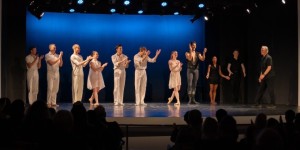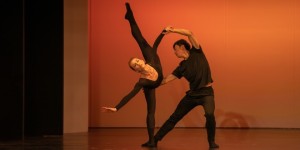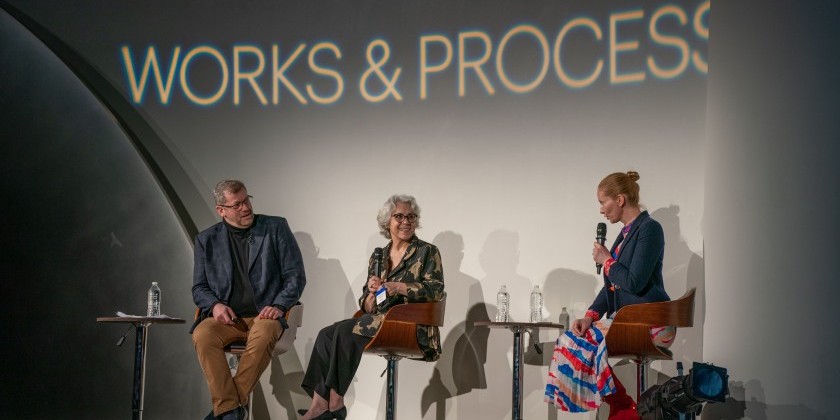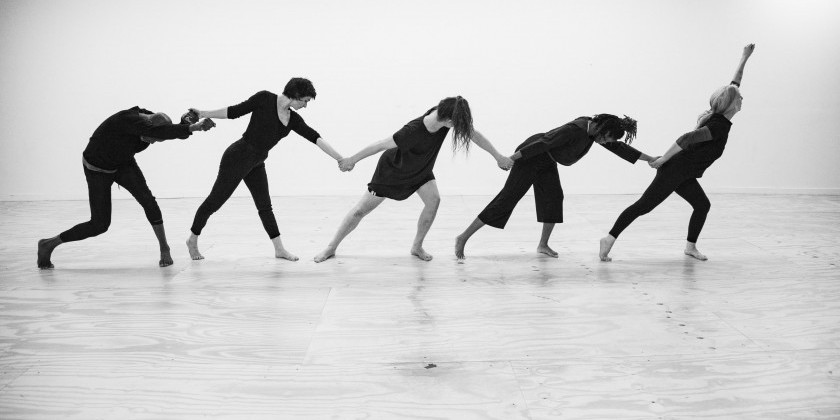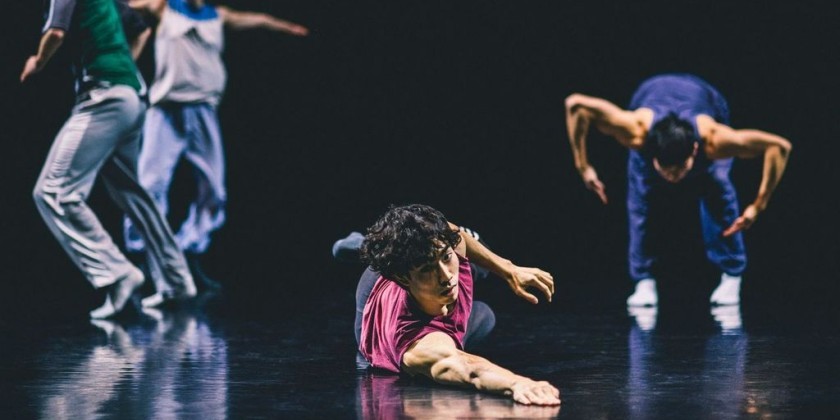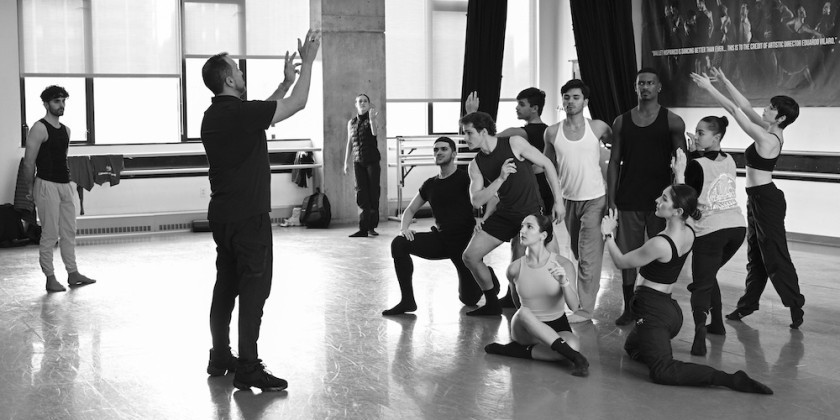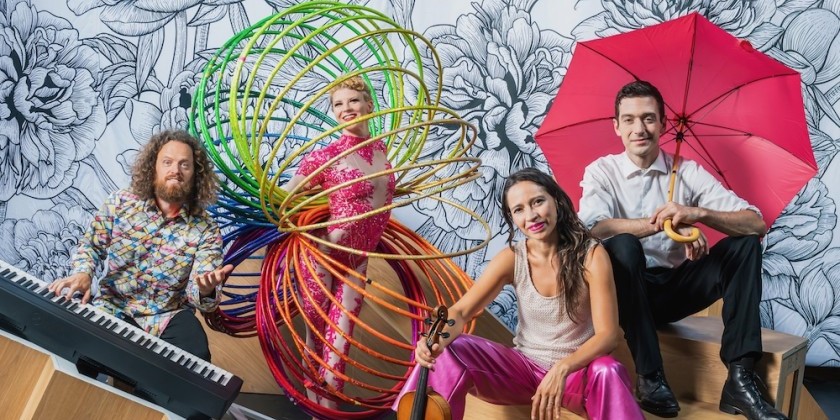IMPRESSIONS: Works & Process at the Guggenheim presents the Merce Cunningham Centennial Celebration
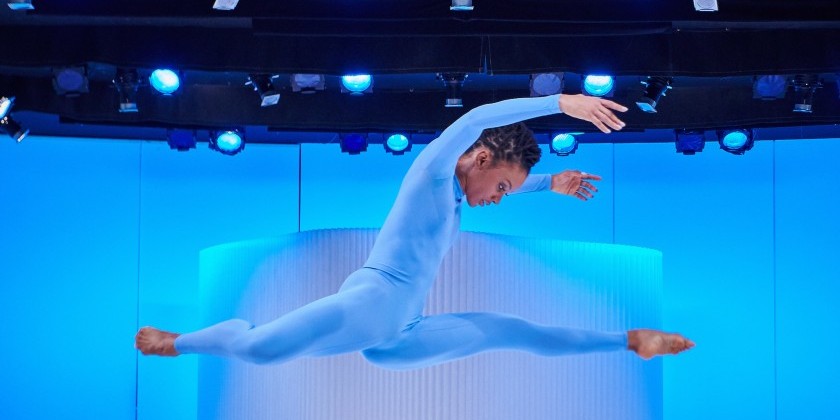
November 25, 2019
Curation: Dylan Crossman
Performers: Christian Allen, Jason Collins, Dylan Crossman, Erin Dowd, Jacquelin Harris, Eleanor Hullihan, Burr Johnson, Claude “CJ” Johnson, Una Ludviksen, Daniel McCusker, Sara Mearns, Jamie Scott, Savannah Spratt, Pam Tanowitz
Music: John King, Jesse Stiles, and Pauline H. Kim
Costumes: Reid Bartelme and Harriet Jung
A yearlong birthday party? Only for Merce Cunningham, the modern dance legend whose legacy lives past his 2009 death. In honor of his 100th birthday, the Merce Cunningham Trust hosted a global tribute to the beloved artist, with festivals, workshops, classes, film screenings, art exhibits, and more. The culminating event — Night of 100 Solos, on April 16th, 2019 (Cunningham’s actual birthday) — featured 75 dancers in three performances live-streamed from New York, Los Angeles, and London.
But the party continues! The centennial celebrations found an ideal partner in the Guggenheim’s “Works & Process” series, a distinctive program in which excerpts of work are presented alongside a conversation with the artists. The rotunda space of the Frank Lloyd Wright-designed Peter B. Lewis Theater offers an inviting canvas for this Cunningham “event.” The stage extends far into the audience on the right and left sides, and a set of a half-cylinder and brilliantly white wings protrude into the performance space.
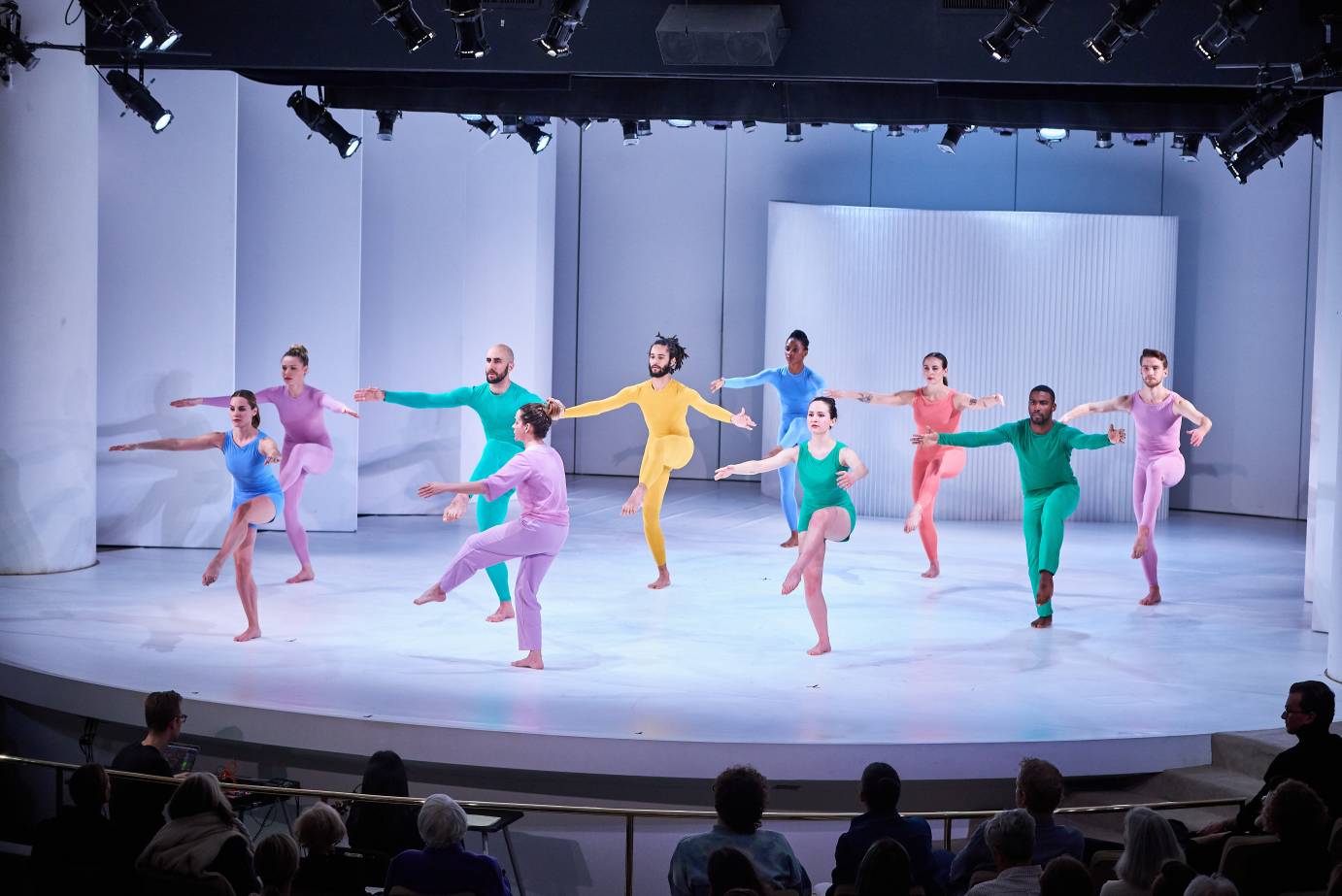
The evening opens with a collage drawn from Night of 100 Solos curated by Dylan Crossman. At first, the dancers barely overlap — they cycle on and off stage in form-fitting, brightly colored unitards. Each moves with their own individual movement vocabulary. A magenta-clad woman ties a matching headband across her forehead and traverses the front of the stage with pliant leg extensions into creature-like lunges.
Slowly, we realize that the action is not just on stage, but all around us, in the aisles and back walkway. Audience members see a different show, depending on their seat location and where they choose to look. A woman in pastel blue promenades in arabesque in the right aisle. From my vantage point, her leg appears to sweep over the heads of show-goers. As more dancers enter, the work surrounds us on all sides. We, too, are a piece in this giant, morphing puzzle.
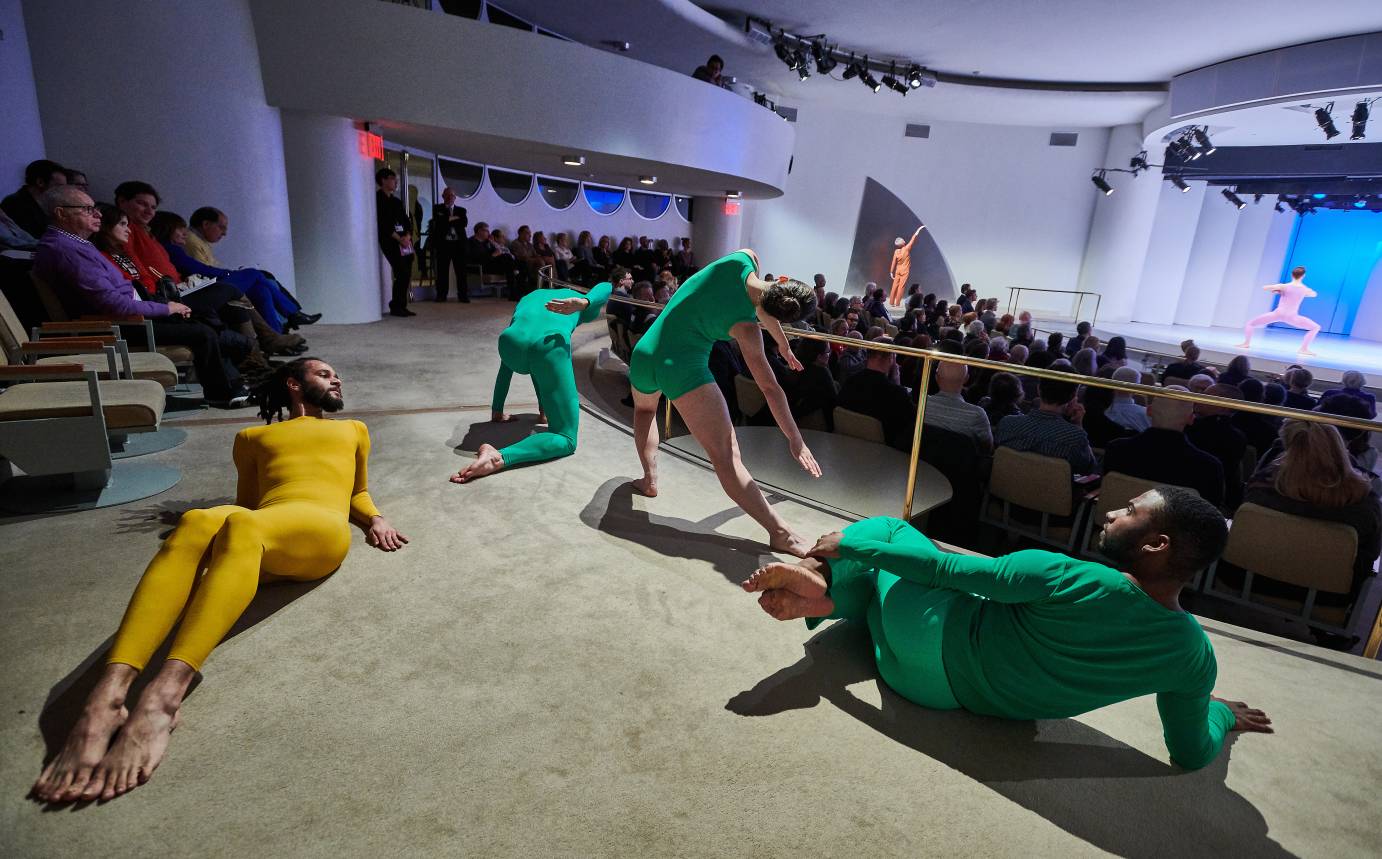
The cast moves with pedestrian ease through each other, like people cycling on and off of a mildly congested subway platform. But the movement is not remotely easy — the dizzying turn sequences and glacial adagios require incredible control. While all the performers are phenomenal, none danced for Cunningham. We pay witness to these individuals from diverse backgrounds and training who confront the challenging movement from their unique physical understanding. Cunningham’s work celebrates the human form, and the unitards highlight the musculature of the bodies tackling these feats.
The work isn’t always serious. In a moment of Dada-esque silliness, a man appears at center stage wearing a distorted Christmas sweater with two sets of sleeves. They flop limply above his head until he knots them. Pam Tanowitz performs a solo of curvy elbow and shoulder gestures, which summons many of the artists to join her onstage in a rare unison. On the sideline at stage right, a rust-clad gentleman performs a goofy dance of wiggly isolations as an amusing counterpoint.
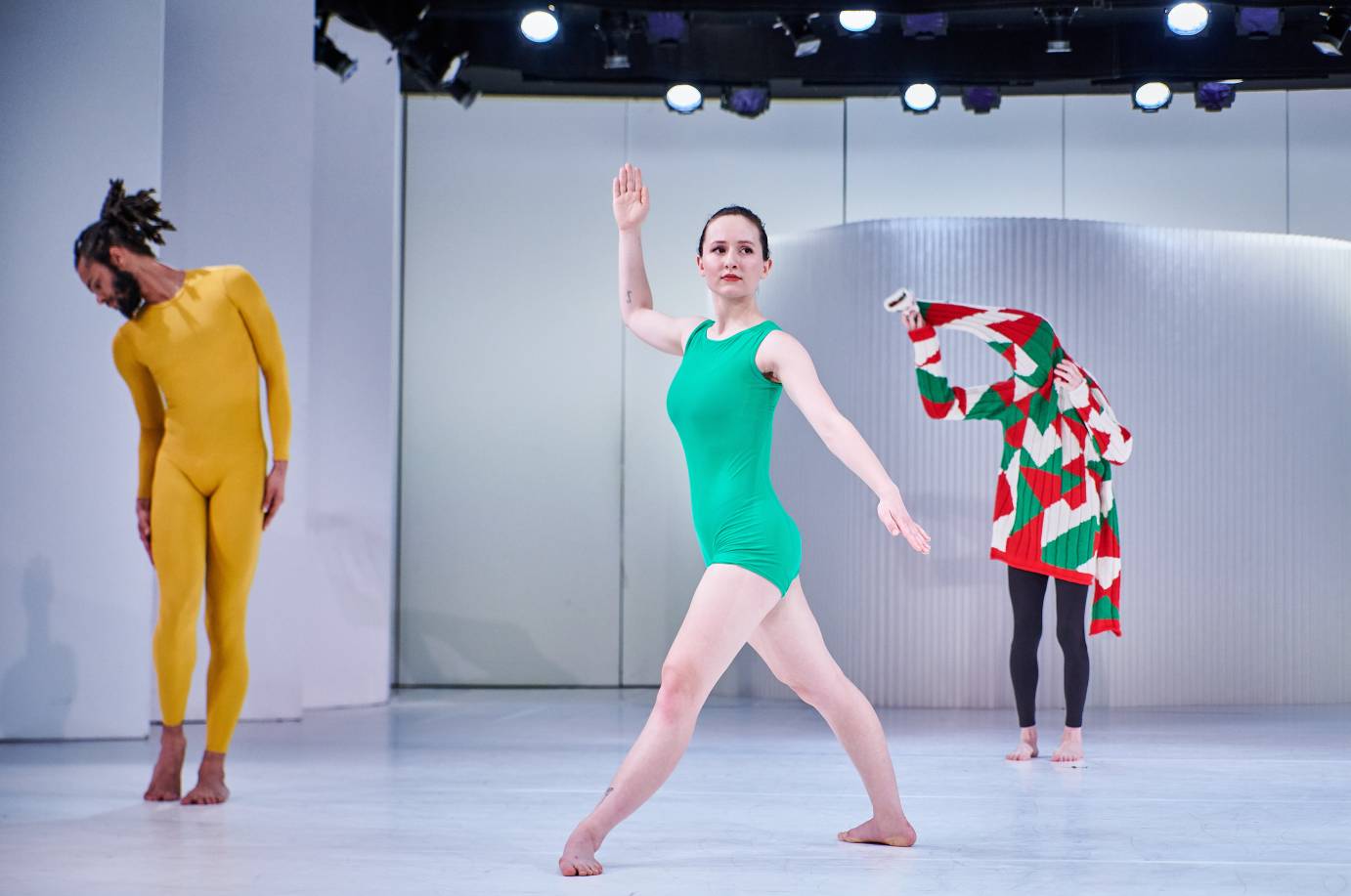
Following the Centennial Solos performance, former Cunningham dancers Crossman and Jamie Scott perform excerpts from Squaregame (1976), eyeSpace (2007), Signals (1970), and Nearly Ninety (2009), four duets spanning decades of Cunningham’s works. In between the duets, Kimberly Bartosik and Gus Solomons jr (also former Cunningham dancers) reflect on the works (they are eventually joined by Crossman and Scott).
Much of Cunningham’s creation process is cerebral and concept-driven. For example, Bartosik describes his use of computers to generate movement sequences. For some critics, this can mean that the product, often non-presentational, feels emotionless or sterile.
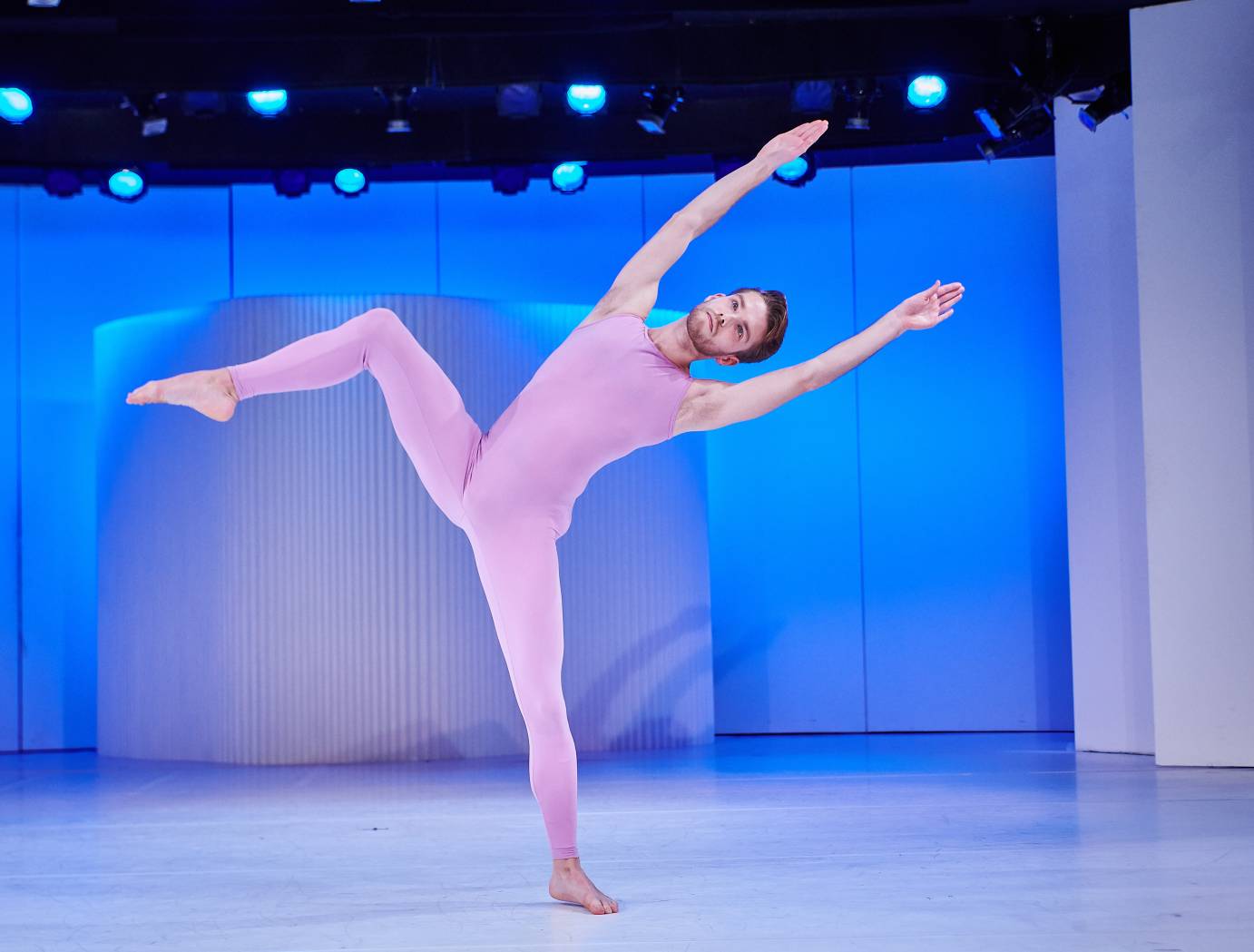
However, the duets portion of this program showcases the special intimacy in Cunningham’s work. The duet was a form that Merce never tired of, and Crossman describes this intimacy as resulting from the shared vulnerability of the dancers as they confront a nearly impossible task. This bond between Scott and Crossman is revealed throughout, like when Scott balances on relevé and then dives her head and chest backward in an extraordinary leap of faith. Crossman catches her in a backbend as her lower body stays perfectly perched.
Timing is also instrumental to the duet work. In eyeSpace, the twosome moves through a series of quick gestures and direction changes. While their movements are never in unison, they are in rhythm with one another, creating a visually compelling effect.
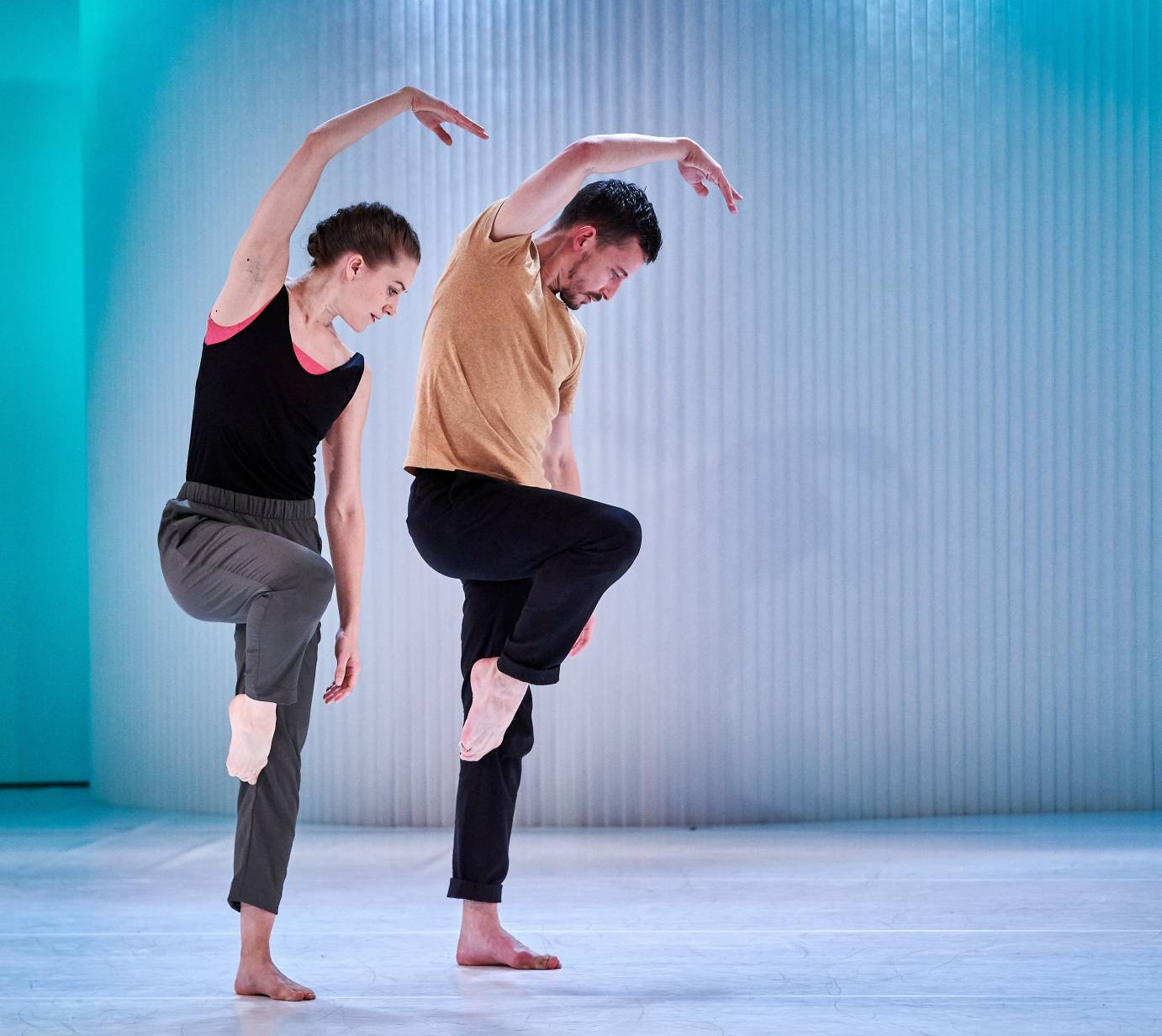
Often, Cunningham dancers would not hear the score until the first performance of a piece. Thus, they had to focus on the rhythm of the choreography to stay in time with one another (frequently, they tuned out the music). It was important to Crossman to include live music as part of the evening, but the scores of these duet excerpts would have been too complicated to recreate at this show. Therefore, the musical accompaniment for this performance are new compositions performed by Pauline Kim Harris (violin) and Jesse Stiles (electronics, composer) — the layering of acoustic and electronic elements references the musical diversity of John Cage's scores.
Even after Cunningham’s death, the ever-curious legend continues to spark innovation. His works live on in bits and full pieces, culled, rearranged, and re-assembled so that nothing gets old or stale because it is continually reinvigorated.






